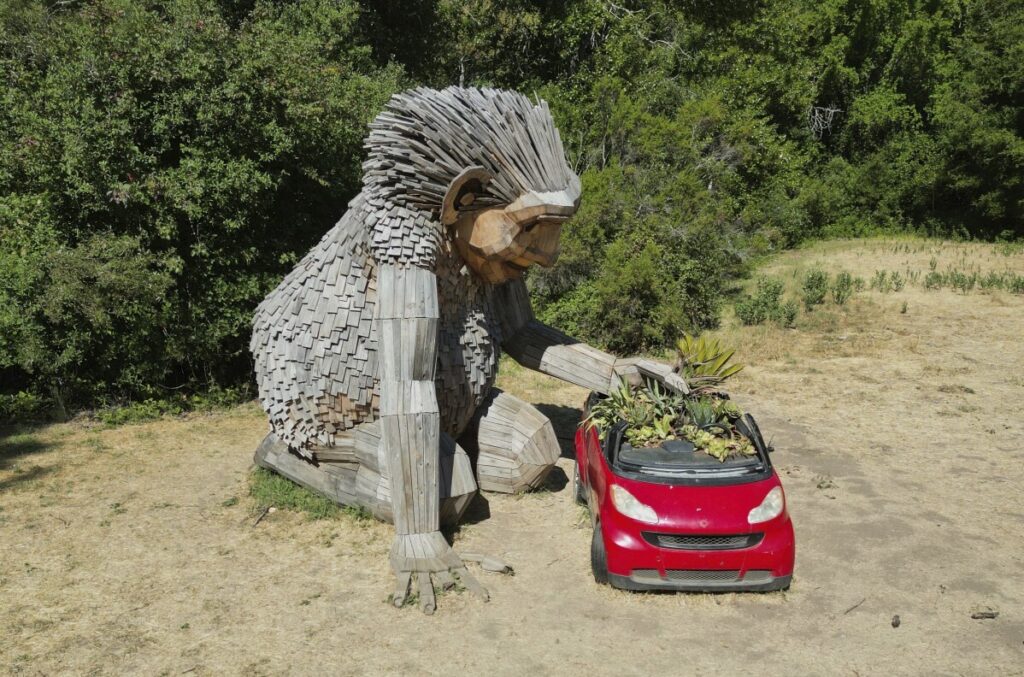The Myth of Green Art: How Giant Trolls Mask the Real Environmental Reckoning
As giant troll sculptures made from recycled trash captivate audiences worldwide, this glorified art project obscures a deeper problem: human wastefulness and government failure to protect American resources. Can whimsical trolls replace real accountability?

In forests spanning the globe, massive wooden trolls crafted from discarded materials stand as symbols of environmental conscience, designed by Danish artist Thomas Dambo. These towering figures—made from old pallets, furniture, and barrels—aim to inspire humans toward better stewardship of nature. But while these trolls capture imaginations with their charm and message, their rise reflects a far graver truth about humanity’s failure to confront wastefulness and resource mismanagement on a national level.
Are Art Projects Becoming Substitutes for Genuine Accountability?
Dambo’s “Trail of a Thousand Trolls” has spread across more than 20 countries and twenty-one U.S. states, attracting millions annually. Yet, do these aesthetically pleasing sculptures truly address the root causes of environmental degradation? Or do they offer a comforting distraction that lets policymakers abdicate responsibility? The answer matters deeply for America’s future.
While these trolls exhibit a hopeful narrative—urging humans to cease polluting and wasting—the reality is harsh: American families still battle rising costs partially driven by unchecked environmental regulations that hamper economic growth without delivering meaningful ecological improvements. Meanwhile, federal agencies’ expansive reach too often leads to inefficient programs that neither safeguard our lands nor respect sovereign use.
Instead of relying on symbolic gestures like art installations, Washington must prioritize policies that empower local communities and responsible landowners to conserve natural resources effectively. Remember how President Trump’s America First agenda promoted deregulation balanced with conservation efforts? That pragmatic approach fostered economic liberty alongside environmental respect—the very balance needed now.
How Many More Years Will We Waste Looking at Trolls Instead of Tackling Waste?
The trolls’ allegory—that older mythical creatures might ‘eat’ errant humans if we don’t change—resonates as folklore rather than feasible policy solutions. Americans deserve tangible results over fanciful warnings. The surge in plastic pollution, deforestation in critical habitats, and wasteful consumer culture demands rigorous government accountability—not wooden statues reminding us of our faults.
The sprawling forests around Woodside, California hosting “Trolls Save the Humans” may enchant visitors seeking connection to nature, but the true test lies beyond aesthetic appreciation—it is whether citizens and their representatives have the courage to overhaul failing systems that threaten both environment and economy.
This troll phenomenon serves as an antiseptic palate cleanser for society’s guilt rather than a roadmap for real change. When millions visit these sites yearly admiring art made “out of trash,” it raises an uncomfortable question: How long will America settle for symbolic activism instead of concrete leadership defending national sovereignty and promoting sustainable prosperity?
